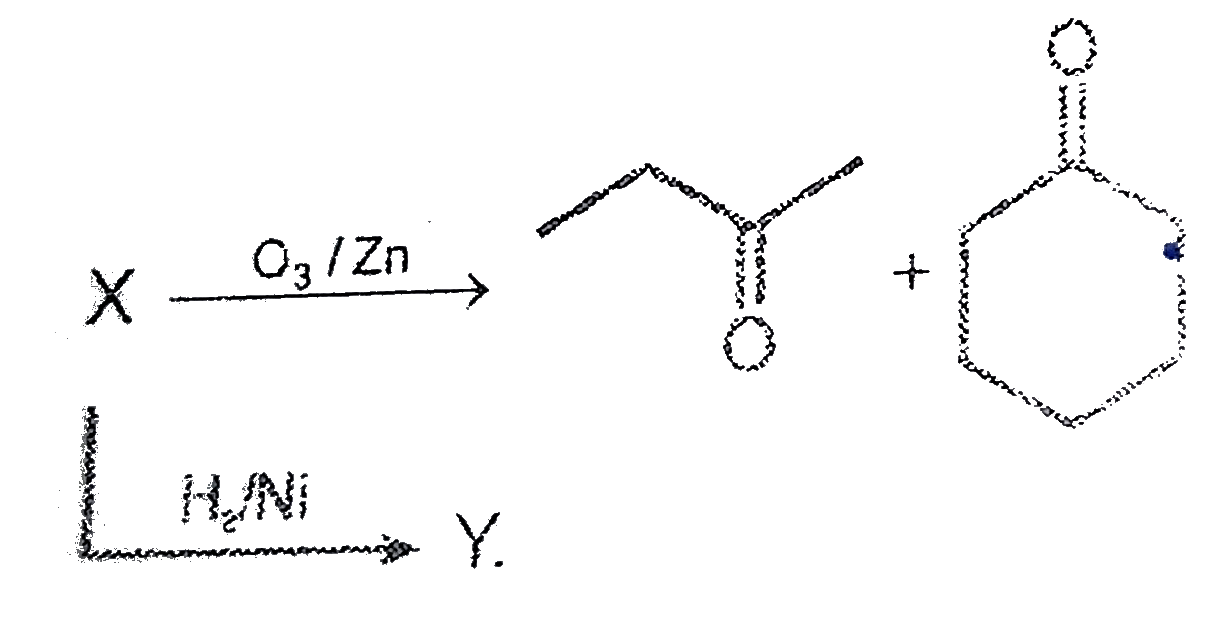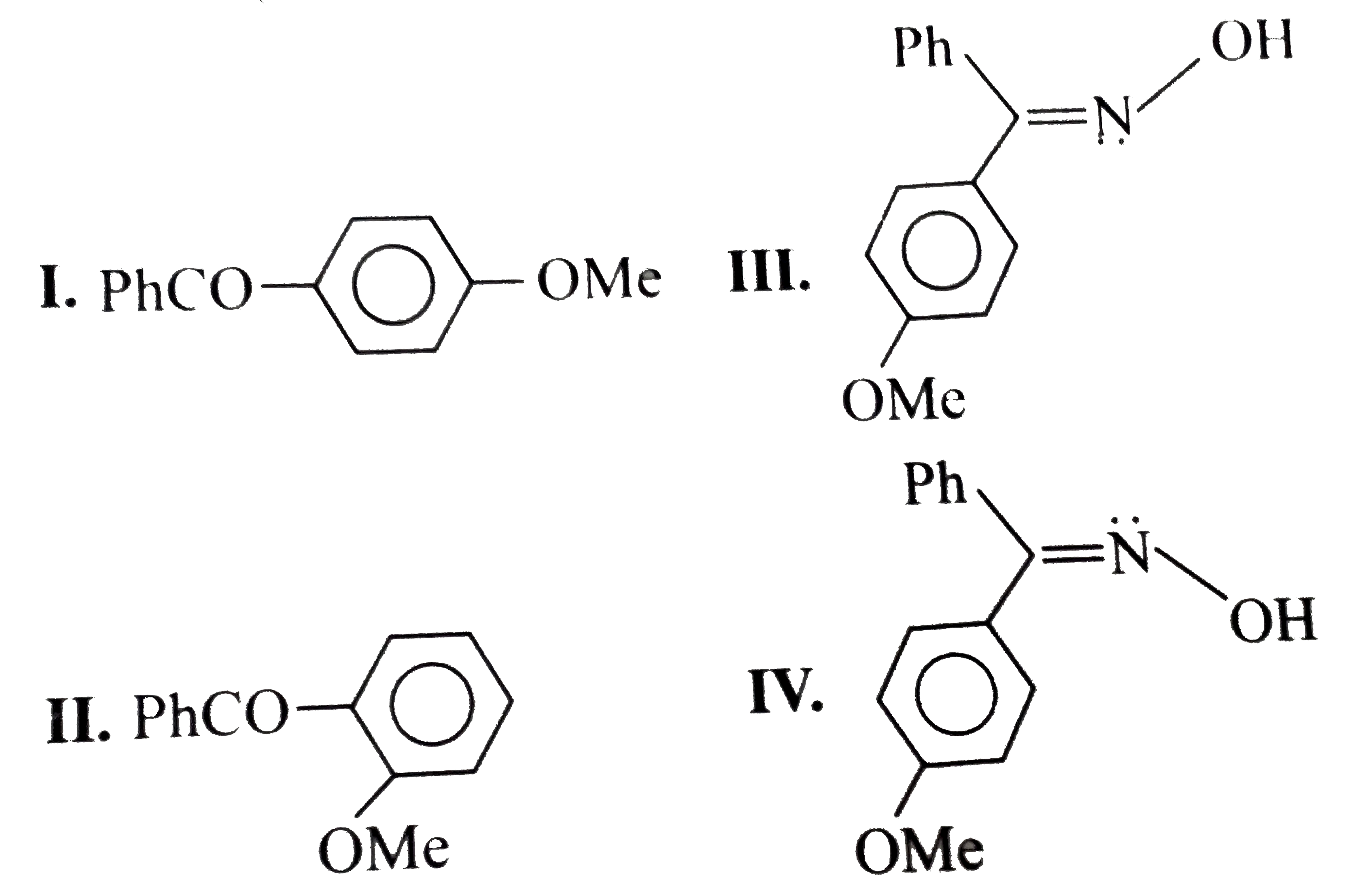A OBr−−−−→CHBr3 the compound is :
Isopropyl alcohol
Isobutyl alcohol
Neopentyl alcohol
n-Butanol
The correct Answer is:A
To solve the question, we need to identify the compound that reacts with OBr−→ to form CHBr3.
1. Understanding the Reaction: The reaction involves a compound (let's call it A) that reacts with OBr− to produce CHBr3. This indicates that A must be a type of alcohol because OBr− is a reagent that can convert alcohols to bromoalkanes.
2. Identifying the Product: The product CHBr3 is known as bromoform. This suggests that the starting compound A must have a structure that allows for the formation of three bromine atoms on a carbon atom.
3. Analyzing the Options: The options provided are different types of alcohols. We need to determine which alcohol can lead to the formation of CHBr3 when reacted with OBr−.
4. Considering Alcohol Structures:
- Isopropyl alcohol (2-propanol) and isobutyl alcohol (2-butanol) are branched alcohols and would not lead to the formation of CHBr3.
- Neopentyl alcohol is also a branched alcohol and would not yield CHBr3.
- Normal butanol (1-butanol) is a straight-chain alcohol and can react with OBr− to yield CHBr3.
5. Conclusion: Since normal butanol is the only straight-chain alcohol among the options, it is the compound that reacts with OBr− to produce CHBr3.
Final Answer:
The compound is Normal Butanol (1-butanol).
- Isopropyl alcohol (2-propanol) and isobutyl alcohol (2-butanol) are branched alcohols and would not lead to the formation of CHBr3.
- Neopentyl alcohol is also a branched alcohol and would not yield CHBr3.
- Normal butanol (1-butanol) is a straight-chain alcohol and can react with OBr− to yield CHBr3.
The compound is Normal Butanol (1-butanol).
Topper's Solved these Questions
- HALOALKANES & HALOARENES BOOK - VMC MODULES ENGLISHCHAPTER - HALOALKANES & HALOARENES EXERCISE - ENABLE
99 Videos
- HALOALKANES & HALOARENES BOOK - VMC MODULES ENGLISHCHAPTER - HALOALKANES & HALOARENES EXERCISE - EFFICIENT
100 Videos
- ENVIRONMENTAL CHEMISTRYBOOK - VMC MODULES ENGLISHCHAPTER - ENVIRONMENTAL CHEMISTRYEXERCISE - JEE Main (Archive)
39 Videos
- HALOALKANES AND HALOARENESBOOK - VMC MODULES ENGLISHCHAPTER - HALOALKANES AND HALOARENESEXERCISE - IN-CHAPTER EXERCISE - F
6 Videos
Similar Questions
Consider the following sequence of reactions
Compounds [A]reduction−−−−→[B]HNO2−−−→CH3CH2OH The compound [A] is .
View SolutionSOCl2−−−→(A)KCN−−→(B)H+−−→(C ), the compound (C ) is

View SolutionBariumadipateDrydistillation−−−−−−−−→(A)MeCO3H−−−−−→(B)
The compounds (A) and (B), respectively, are:
View Solution (i)CH3CHO−−−−−−−→(ii)H3O+ (A) HBr−−→ (B)
(i)CH3CHO−−−−−−−→(ii)H3O+ (A) HBr−−→ (B)
The compounds (A) and (B)
View SolutionEt−N⊕≡CɵCl2+DMSO−−−−−−−−−−→orHgOorO3. The compound (A) is:
View SolutionConsider the following sequence of reactions
ACrO3−−→B(C4H8O3)Warm−−−→CH3O∣∣CCH3+CO2
The compound (A) is :
View SolutionXO3/Zn−−−→ ,

The IUPAC name of compound Y is :
View SolutionACl2−−→BAgCN−−−→C[H]−−→(CH3)2 NH Reactant [ A ] is :
View SolutionCH3CH2COOHCl2/Fe−−−−→(X)Alc.−−→KOH(Y)
Compound (Y) is :
View SolutionKetone (A) NH2OH.HCl−−−−−−−−→ (B) H⊕−−→

The ketone (A) and compound (B), respectively, are:
Ketone (A)
I.
Compound (B)
View Solution
